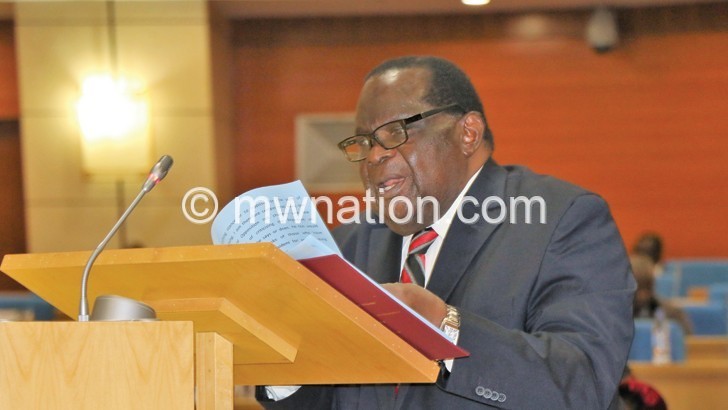April inflation eases to 9.7%
Malawi’s year-on-year inflation in the month of April eased by 0.2 percentage points to 9.7 percent on account of declining maize and non-food items prices, figures from the National Statistical Office (NSO) published yesterday have shown.
During the review period, food inflation eased by 0.6 percentage points to 10 percent from 10.6 percent in March while non-food inflation eased by 0.8 percentage points to 8.9 percent from 9.7 percent the previous month.

Maize prices have been on the decline owing to the harvest period, with a 50 kilogramme bag of maize selling at an average of K5 000 from K7 000 in January.
But in recent months, maize prices have been on the increase, selling at an average of K7 000 due to speculation in the wake of the looming hunger due to the dry spell and fall armyworms.
According to the second round Agricultural Production Estimate Survey, maize production is estimated to have declined by 19.4 percent from 3.5 million metric tonnes (MT) recorded in 2016/2017 growing season to 2.8 million MT in the 2017/18 growing season.
Maize is Malawi’s staple grain that traditionally impacts the country’s economy given its skewed influence in determining inflation rates as it constitutes 45.2 percent in the consumer price index (CPI), an aggregate basket that determines the average movement in the cost of living.
Minister of Finance, Economic Planning and Development Goodall Gondwe told Parliament when he presented the 2018/19 National Budget Statement on Friday that government projects the average inflation for the country to decelerate to an annual 9.9 percent in 2017 and to decline further in 2018 and stabilise at around 7 percent on account of continued stable macro-economic conditions in the region, improved economic management and governance.
“It is the expectation of the government that the stable exchange rate coupled with low levels of inflation will help the private sector invest more to boost its productivity for exports, import substitution and job creation,” said Gondwe.
RBM governor Dalitso Kabambe said earlier that the monetary policy stance during the first half of 2018 will focus on entrenching disinflation and attaining the targeted five percent inflation in the medium term, and maintain a minimum of three months import cover of official foreign exchange reserves.
Economist Gilbert Kachamba said while low inflation is a dream for every economy, the worry for most Malawians is the transformation of this downward trend to real life experiences. n





